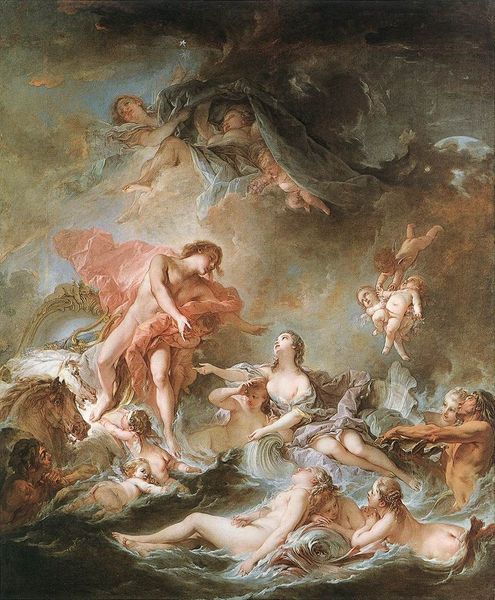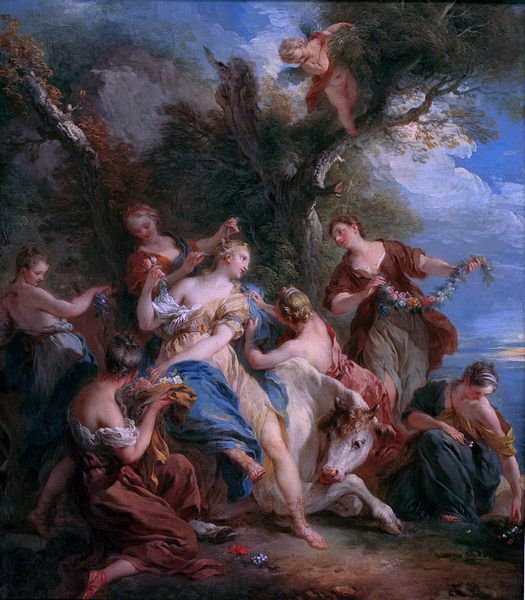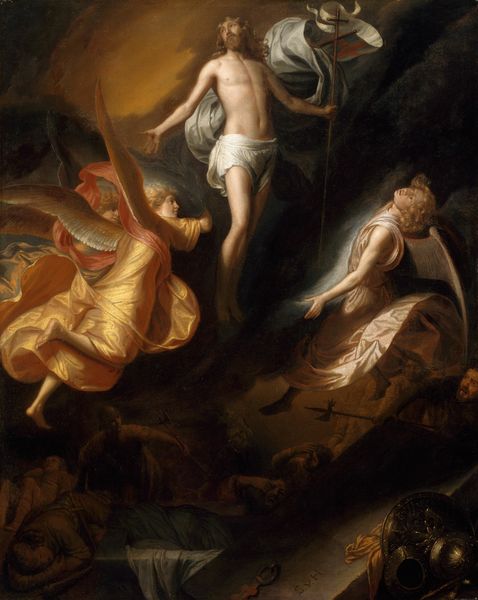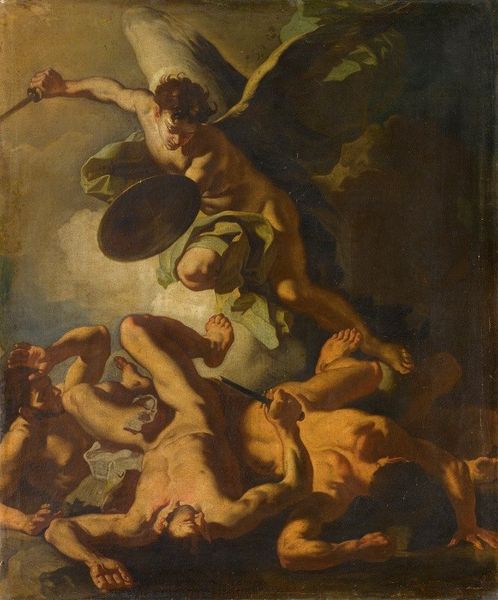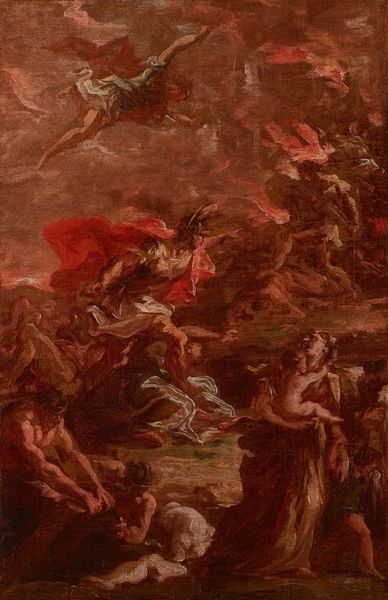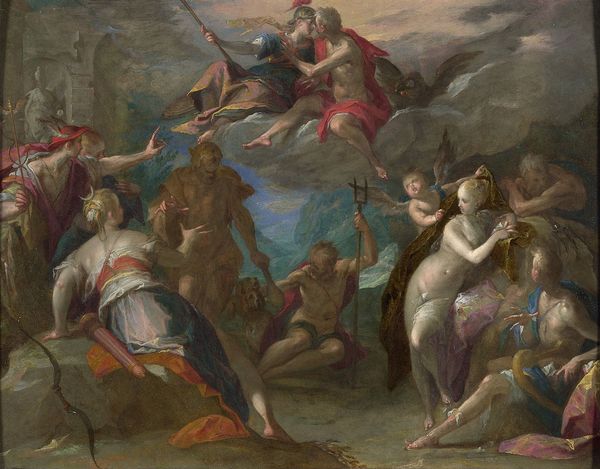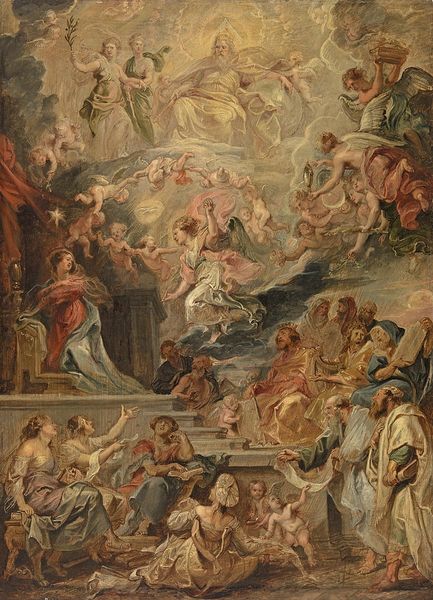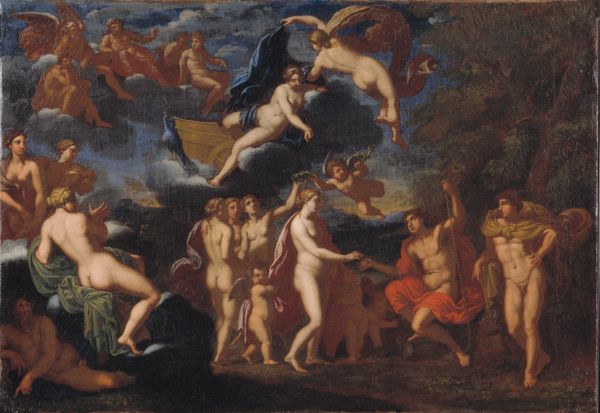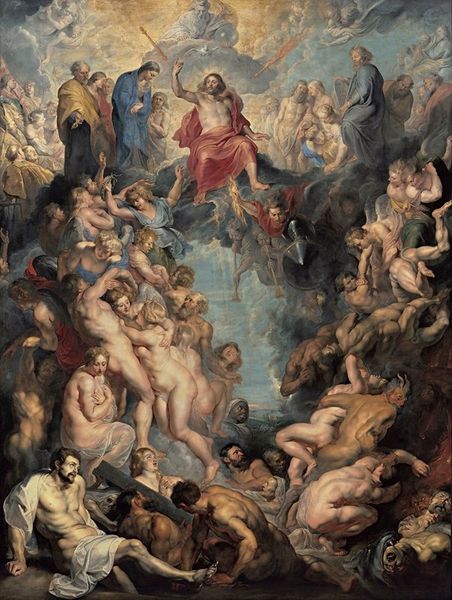
oil-paint
#
allegory
#
baroque
#
oil-paint
#
oil painting
#
history-painting
#
nude
Dimensions: height 192 cm, width 157 cm, depth 7.5 cm, weight 40 kg
Copyright: Rijks Museum: Open Domain
Curator: This oil painting by T. van Malsen, executed around 1694, presents us with "Diana and Virtus Punish Venus and Bacchus." My immediate sense is of a rather somber Baroque drama unfolding, characterized by the diagonal sweep of figures and the play of light and shadow. Editor: Indeed, the dynamism is captivating. Note the strong chiaroscuro effect; it highlights the almost porcelain-like skin of Diana against the darkened, turbulent clouds. I find myself drawn to the technical facility on display—look at the cascading folds of drapery and how they serve to heighten the theatrical tension of the scene. What can you tell us about its creation and context? Curator: Van Malsen worked at the Stadhouderlijk Hof in Leeuwarden, and was influenced by Lairesse, whose impact would likely be more aligned with classicism than a raw style such as the tenebrism seen here. Beyond stylistic lineage, there’s something important in what the labor itself would symbolize: the commission, the type of materials available to the artist. Van Malsen would be making his paint using very specific pigments acquired from near or afar. How might that inform our understanding? Editor: Let's consider how the allegorical content shapes our viewing experience. We have Diana, goddess of the hunt and the moon, standing above a clearly suffering Venus and Bacchus. Virtus, personifying virtue, sits alongside her, severing at their licentiousness, no doubt. The composition effectively creates a moral hierarchy; the cool detachment of Diana and Virtus contrasting with the fallen state of the other two. Is this meant as some sort of cautionary tale? Curator: It’s a depiction of morality as crafted and enacted within a court setting; Venus and Bacchus and their earthly and fleshly pursuits threatened not merely divine authority, but specifically, the moral underpinnings of courtly power itself. We need to recognize the socio-political dimensions to unpack how and why this type of scene was consumed at that time. Editor: An intriguing angle, connecting morality directly to social and political forces! Yet, there is also a formal balance at play. Notice the almost symmetrical arrangement of figures around the central axis created by Diana, the way it all resolves into this easily readable composition of sin and reprimand, reinforcing this interpretation on multiple levels. Curator: For me, tracing where the pigments came from and understanding what kind of political forces were in play at the time gives just as clear an idea of what’s at play as the formal composition. Editor: I agree, that gives us much to think about, considering both how the materials and making and the moral weight can speak to each other.
Comments
No comments
Be the first to comment and join the conversation on the ultimate creative platform.


